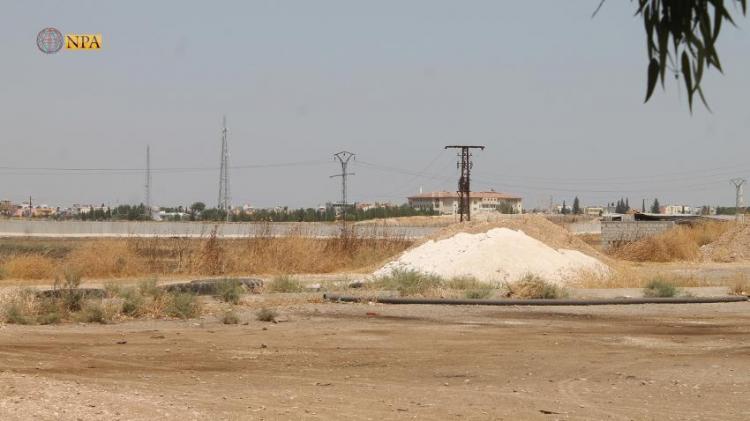Sere-Kaniye – North-Press Agency
Abdelhalim Suleiman
As the security mechanism agreement’s entry into force on the Syrian-Turkish borders, some residents of the towns and villages which are included in the agreement fear demographic change, while others stress that such steps will preserve the security and stability of the areas adjacent to the Turkish borders.
To the west of the city of Sere-Kaniye (Ras al-Ain), in the northern countryside of Hasakah, villages adjacent to the Turkish borders are distributed up to 40 km, such as, Tal Halaf, al-Aziziyah, Mukhtala, Tal Khanzir, al-Rawiyah, Mabrouka and others, as villages are less densely populated towards the town of Soluk in the area of Gre Spi (Tal Abyad), to the eastern countryside of Kobani.
The “security mechanism” which was agreed between the United States and Turkey, on August 7th, includes the designated areas between Gre Spi and Sere-Kaniye, at a depth of 5 to 14 km, as it includes all those above mentioned villages, which raised the concerns of the local people of these areas about the future of their region, as they have already suffered too much because of the borders geography and conflicts in the country.
Nearby the village of Tal Halaf, Ahmad Matar, a petrol station worker, about 100 meters far from the border-wall, which was built by the Turkish regime last year.
” We are under constant threats of soldiers carrying arms all the time”, Ahmad told North-Press.
In the village of Tel Arqam, 10 km west of the city of Sere Kaniye, a US observation point is located on a top of a hill overlooking the Turkish borders, which had recently witnessed fortifications and new constructions, in addition to U.S. reinforcement of troops and military equipment and vehicles.
“A safe area in its meaning?”
In the village of al-Aziziyah, the Syrian Democratic Forces (SDF) had halted the operations of digging tunnels and defense fortifications, after its Commander-in-Chief, General Mazloum Abdi had announced at the annual meeting of his forces in the city of Hasakah that they would be a positive side in the success of the US-led efforts to establish security on the Syrian-Turkish borders.
Zayed Issa, a resident of the village of al-Aziziyah said that the SDF troops withdrew excavation equipment and machineries and refilled tunnels near their village. Issa hopes that the “safe zone” agreement will ensure sustainable security and stability which was achieved under the SDF.
He also pointed out that the agreement gave some kind of reassurance to the local people, hoping that the area will be as safe “as it’s called.”
Fears of demographic changes
Turkey has set up a camp on the other side of the borders, near the village of Tal Hammoud inside its territories in 2011, to receive Syrian refugees, as this camp is adjacent to the borders with Syrian territories, while there were reports during Turkey’s threats to invade north and eastern Syria, that some pro-Turkey armed groups were stationed in the camp in preparation for participating in the Turkish assault against the region.
Fares Sino with his family has an agricultural field opposite the camp, about 2 km from the borders. Fares fears the entry of these armed opposition groups, and wishes that the safe zone remains under international supervision, “to protect the Kurds and land owners from the Turkish assault”.
Fares Sino expressed his satisfaction with the presence of the U.S. patrols in the region, which are flying the USA flags while running on the road adjacent to his house, opposite to Mukhtala village, 20 km west of Sere-Kaniye, stressing that they did not see any Turkish patrols accompanied by the U.S. patrols during the previous period.
Sino also fears that Turkey could change the demography of the region in case it lets the Syrian refugees to their villages and farms which they had inherited from their parents and grandparents.
It’s worth mentioning that People’s Protection Units (YPG) had begun withdrawal process from bordering areas, and formally filled the trenches, to be replaced by local forces of military councils in coordination with the Global Coalition Forces and the SDF, within the framework of the “security mechanism”.

